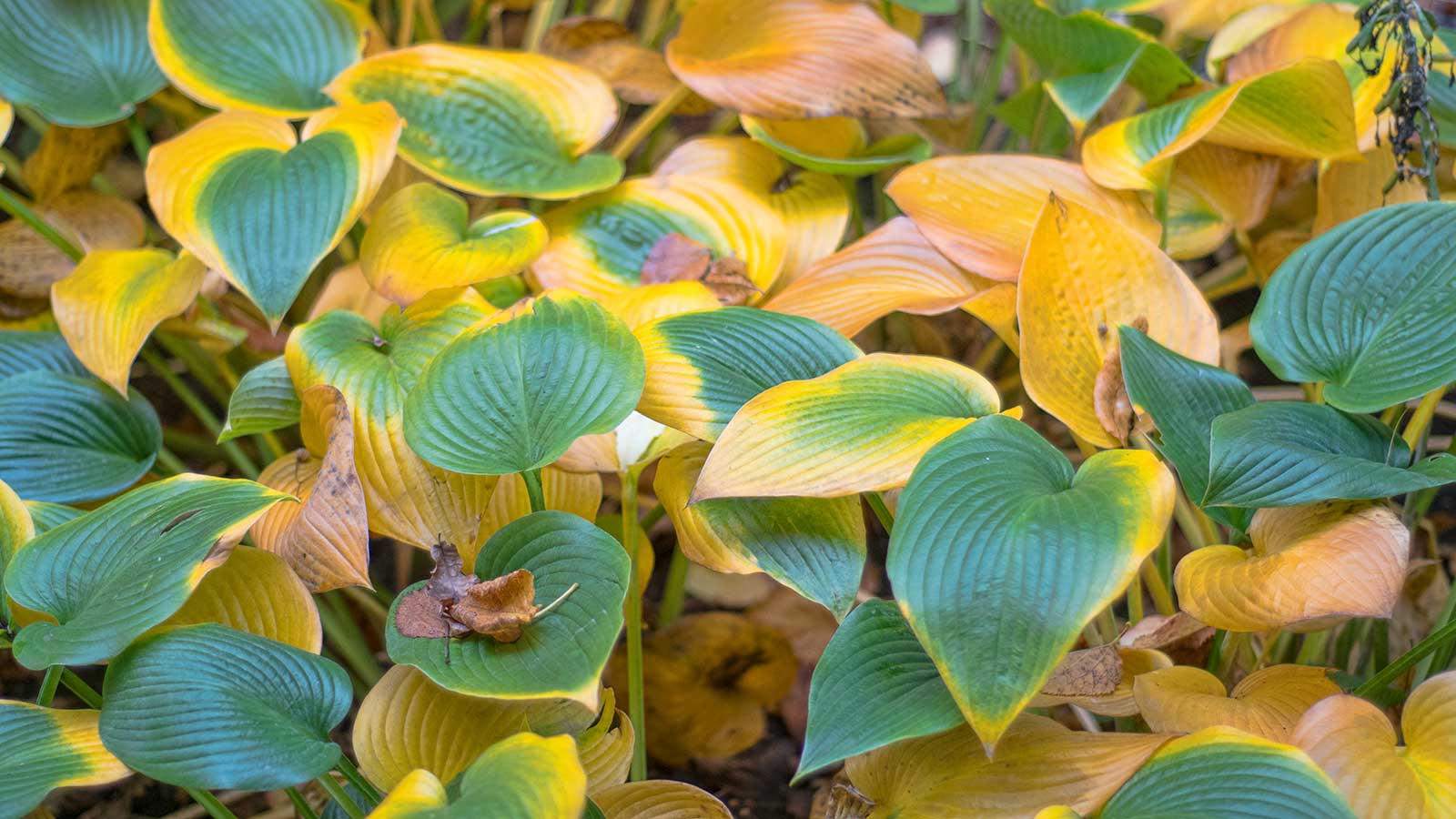
Q: I have lots of new hostas in my courtyard garden. Some are growing in containers, and others are planted at the front of a small border. Recently, a few of the plants have started to turn yellow. What's caused this, and how can I remedy the problem?
A: Hosta leaves will turn yellow and die back toward the end of the growing season. This is perfectly normal, and they can be removed as you prepare the plants for winter in the late fall. However, if your hosta foliage has lost its usual hue prematurely, it's likely to be a sign of stress caused by environmental factors.

3 ways to keep your hosta leaves green
Try these tips for thriving hosta plants in your yard.
1. Move them to a shadier spot
'Most hostas prefer at least some shade throughout the day, and many can handle full shade,' says Anna Ohler, the Owner of Bright Lane Gardens nursery. If you plant them somewhere with too much sun, they can scorch – which means brown and yellow leaves.
The solution is simple; carefully dig up the clump (or pick up the container, depending on where they're planted) and move it somewhere more suitable, alongside other shade-loving plants. Alternatively, Anna suggests providing shade to the area, using a shade cloth or a taller plant to block the sun.

2. Feed and water them properly
Hostas can also go yellow as a result of poor soil. Before planting, it's best to prepare the site with plenty of organic compost. This will provide nutrients to the plants and help the soil retain moisture.
'Hosta leaves will turn yellow if the plant is too dry,' says Anna. 'If this is the cause, it will also be accompanied by curling leaves that feel slightly crispy to the touch.' Make sure your hostas receive consistent waterings throughout the week, she advises. Ideally, try to keep the soil damp. You'll need to water containers more often than garden borders, particularly during periods of drought.
However, it's important not to overdo it. 'Hostas will also start to turn yellow if they are overwatered,' Anna says, explaining that the leaves will also look droopy and be soft to the touch.
In terms of feeding, gardening expert John Negus advises fertilizing them monthly from spring until early fall. He also recommends mulching them, which is useful for suppressing weeds, too.

3. Check for diseases
Hostas are usually easy to look after, provided they're in the right spot. However, there is a chance that they can succumb to diseases. Rot, fungal infections, and viruses can all change the coloring of these plants from lush green to yellow. It can also cause them to collapse, turn mushy, or even emit an unpleasant smell.
Avoiding overwatering and overcrowding plants can help to prevent these problems, as can carefully inspecting plants for telltale signs before you add them to your yard. But, if disease does occur, the best course of action is usually to remove any affected areas, or dispose of the plants entirely. Remember to clean your pruners and other tools thoroughly after using them on diseased plants.

Of course, some hostas are supposed to have more yellow in their coloring, such as 'Fire Island', 'Orange Marmalade' and 'Liberty' from Nature Hills – the latter two being variegated varieties. But, if yours have turned an unexpected color because something's not quite right, the tips above should help.
And, for healthy plants, remember to keep a lookout for slugs, too. They are renowned for wreaking havoc with hostas.







